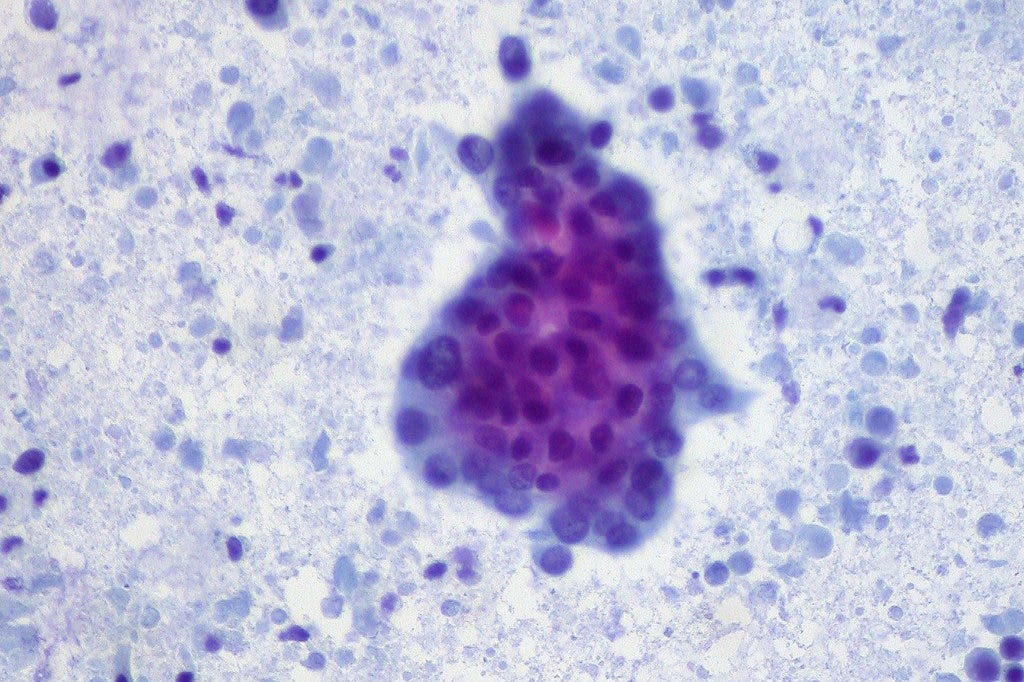Turning off one gene could completely block pancreatic cancer.

Image credits Ed Uthman / Flickr.
Pancreatic cells work in some pretty hazardous conditions. So, they come equipped with a particular gene that allows them to switch back to a more ‘primitive’ state and divide to make up for any fallen colleagues. However, this process can also create the conditions for pancreatic cancers to develop — and one group of researchers is looking into how to prevent it from happening. The results far exceeded their expectations.
Under maintenance
“We found that deleting the ATDC gene in pancreatic cells resulted in one of the most profound blocks of tumor formation ever observed in a well-known mice model engineered to develop pancreatic ductal adenocarcinoma, or PDA, which faithfully mimics the human disease,” says corresponding author Diane Simeone, MD, director of the Pancreatic Cancer Center of NYU Langone Health’s Perlmutter Cancer Center.
“We thought the deletion would slow cancer growth, not completely prevent it.”
The study built on the theory that pancreatic cancers develop when adult cells switch back to high-growth cell types (acinar-to-ductal metaplasia or ADM) — like those that drive fetal development — to repair local tissues. If this reversion takes place in the presence of genetic errors, the repair process quickly goes haywire, leading to unchecked cellular proliferation — cancer.
Led by researchers from the NYU School of Medicine and the University of Michigan, Ann Arbor, the team found that the ATDC gene must be active for injured pancreatic cells to undergo reversion. They focused on a type of pancreatic cells called acinar cells. Acinar cells produce enzymes to support digestion and dump them in the small intestine via a network of ducts.
But, they don’t call them digestive enzymes for nothing — these compounds do damage the ducts and associated cells as they move towards the small intestine. It’s not particularly heavy damage, but it does build up over time. As such, acinar cells have evolved to easily switch back into stem-like cell types, as did pancreatic duct cells, in order to heal this damage. If they do undergo this repair process after acquiring random DNA changes (mutations), however, they are prone to becoming cancerous. Mutations of a gene called KRAS, for example, have previously been linked to aggressive growth in more than 90% of pancreatic cancers, the team explains.
The team artificially caused pancreatitis in mice by treating them with cerulein, a signaling protein fragment that damages pancreatic tissue. ATDC gene expression (i.e. activation) did not increase right after the damage was caused. Rather, it took a few days to get going, which the team says is consistent with the timeframe required for acinar cells to reprogram genetically into their ductal cell forebears. Mutant KRAS and other genetic abnormalities induced aggressive pancreatic cancer in 100% of the mice used in the study — if the ATDC gene was present and active.
However, none of the mice used in the study developed pancreatic cancer in the absence of an active ATDC gene. Further experimentation has shown that ATDC gene expression triggers beta-catenin, a cell-signaling protein that activates another gene, SOX9. Previous research has linked SOX9 to the development of ductal stem cells and to the aggressive growth seen in PDA. The present study supports this link, finding that cells lacking ATDC can’t become cancerous due to their inability to induce SOX9 expression.
In human tissue, the team reports based on a study of 12 human pancreatic tissue samples, ATDC expression seems to be more pronounced than that seen in mice. Its activation increased further during the transition of ADM into human pancreatic ductal adenocarcinoma. The findings could help serve as a base for developing new prevention and treatment strategies for pancreatic cancer, the team concludes.
The paper “ATDC induces an invasive switch in KRAS-induced pancreatic tumorigenesis” has been published in the journal Genes & Development.






